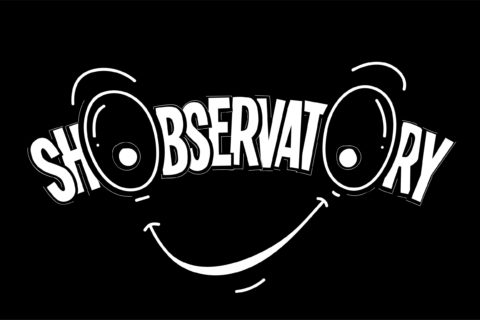Societally, research’s contribution towards fighting COVID-19 has thus far been utterly invaluable. Data/evidence/insight communication has, and will continue being, vital in informing governmental actions and increasing public knowledge.
But what about client value? Has research been able to add the same value commercially as it has societally?
I’d argue no. This is because the COVID-19 research offer to clients has typically been one of:
1. ‘It’s business as usual – just do everything online’
Maybe. But is it valuable to collate attitudes and opinions when they’re changing daily? And why measure purchase intent when economic stability is perishing hourly?
2. ‘Here’s our COVID-19 barometer’
COVID-19 barometer readings are currently as prevalent as #HaircutAtHome selfies. Unfortunately, their readings have a shorter shelf life vs. a DIY crew cut. Opinions and attitudes are changing daily. By the time barometer readings are communicated, they’re outdated. Furthermore, why are researchers providing undifferentiated readings that often only reaffirm the obvious?
3. ‘We’ll help you navigate the new normal post-pandemic’
The world may be different in some ways post-2020. However, human’s core motivations have remained constant for decades, centuries in some cases and won’t change due to COVID-19. Reciprocity bias originated in 1792BC. Confirmation bias in 1377. Scarcity bias in 1975. The list can go on. Strategy is built around things that are stable. Valuable research permeates into strategy. Anything centred on insights into ‘the new normal’ will, at best, be short-term tactics.
4. ‘How consumers will behave after lockdown restrictions are lifted’
In the current lockdown climate, field experiments to observe behaviour – the best way to understand behaviour change – aren’t possible. Resultantly, swathes of surveys based on samples of locked-down, wall-crawling consumers – the antithesis of accurate predictions – are being used to ‘help’ businesses try and predict how their customers will behave once the ‘new normal’ begins. At best these are misleading. At worse, dangerous, in understanding future behaviour.
What can research do to add client value?
Despite all of this, research can add great value to clients at this time:
1. Effectively implement pre-pandemic insights
Many insights generated pre-pandemic are still valid. The client whose soft drink didn’t meet its action standard because it tasted artificial on 28th February still needs to know how to remedy this. The technology client who tested 3 app wireframe concepts on 15th March still needs to know which concept to invest in and where investment should be made. All that’s changed is that communicating these insights is harder due to mass remote working. This is due to:
- New challenges for our client’s attention while they’re at home
- Increased e-mail usage – standing out in inboxes is even harder
- Rising screen usage – and therefore screen fatigue
Yes, Zoom and Teams help this. However, implementing insights via these platforms require new skills to overcome screen fatigue and maximise video debriefs effectiveness such as:
- Eye-catching email headlines
- A ‘less is more’ attitude for everything (decks/emails/meeting length)
- Building new debrief etiquette: sending pre-reads and having question times at the end to avoid interjections
2. Help clients advertise appropriately
Henry Ford said:
“A man who stops advertising to save money is like a man who stops a clock to save time”.
Added with screen time increasing due to lockdown, the savviest brands will continue to advertise in this period. However, advertising’s appropriateness is under more scrutiny than ever. Help clients ensure their advertising is fit-for-purpose in the current environment by offering agile advertising advice. If the client has no budget? Do it at cost or pro-bono. Now’s the time to show clients you care about their brand.
3. Support brands as they stop, think and plan
The limited value of conducting much new research in this period means brands can invest significant time in diagnosing their current status. Often this means evaluating existing pre-pandemic research to understand their strengths and weaknesses. Support this by providing frameworks that can unearth new insights from existing data, revisiting text data, often ignored due to the commercial world’s high operating speed and sharing your cross-sector knowledge. Will client’s existing data still be valid post-COVID-19? Absolutely. Much like human motivations will be consistent post-pandemic, so too will many brand’s positioning, perception and equity.
With COVID-19 seemingly here for the foreseeable future, and the economic aftermath for undoubtedly longer, let’s stop and think about how we add value to clients. Let’s appreciate that:
- The ‘new normal’ is unlikely to be that new
- Attitudes are everchanging
- We value our clients enough to help them manage their brands in this commercially trying period
Barometers aplenty won’t help this. What will help clients – and in turn allow research to provide value to them – is sharing our understanding of human behaviours, our cross-category knowledge and our strategic acumen as brands stop, think and diagnose where they want to head post-COVID-19.



1 comment
Hi, Jack,
Thank you for sharing your opinion in this article.
As a Market Research professional I agree that it is not possible at this time to predict an exact change in people’s behavior….but neither can you say exactly that people will not change their behavior. That would be a very reckless statement that you cannot prove at this time.
Most research companies are doing a lot of measuring to explore trends, not to write any findings in stone. They’ve also been looking at findings from previous crises around the world and where, by the way, there were changes in behaviour.
In addition to the topics you recommend exploring at this stage Covid-19, I would add the theme Innovation. At this time there are many unmet needs that people did not even know were there and it is important for companies to explore this because as you know all innovation processes do not take place in a week.
Regards,
Carolina N.